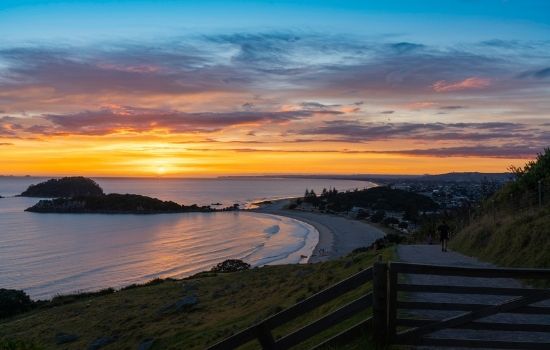Golden Hour Photography

Why is the golden hour revered by landscape photographers?
It is the best moment of the day to take photos because the light is soft, diffused, and warm.
Golden Hour is when the sky goes from yellow to orange to red – those golden tones having a warm colour temperature, the lighting is soft, diffused with little contrast because the sun is low in the sky. This period of time does not produce strong shadows or harsh lighting and is an ideal time for landscape photography. At times you will get amazing sun beams 15 to 20 minutes before the sun sets.
Golden hour is around one hour after sunrise and one hour before sunset.
Settings to try for Golden Hour Photography:
- Aperture – f/8 through to f/22. Ideally, around f/14 for a sharp image from foreground to background.
- Use Aperture Priority Mode.
- Shutter Speed – Automatic.
- ISO – 100-200 (lower the better). Best not to go past 400 if lots of shadows are in the area. Use a tripod if the shutter speed falls below 1/60 sec or bump up the ISO.
- Change the white balance to cloudy – this will add extra warmth to the image and bring out the rich golden colours.
- Exposure – pointing to a bright sun will under expose the darker areas but this will produce a contrast in both sunsets and sunrises.
- Check the histogram – check the right side is not banked up hard against the right edge and big spikes on the right or the image will be over exposed.
- Very Important – never look directly into the sun. It can damage your vision. Use the live view on your camera not the viewfinder.
Composition Tips for Golden Hour Photography:
- You can create some amazing photos if clouds, dust, fog, or smoke is in the air.
- Add a foreground element for sense of scale – a pier, birds, a tree, rocks, a person, or a silhouette for interest.
- The rule of thirds – place the sun, horizon, and silhouettes off centre. Let the most interesting and dramatic scenery take up two-thirds of the image.
- To create starbursts – use aperture f/22 when the sun is close to the horizon and in the frame.
- Include reflections – important to get an even split of the reflection from both sides and not to cut off the bottom of the frame.
- Use a wide-angle lens for sweeping landscape photos or a telephoto lens if a larger sun is required.
